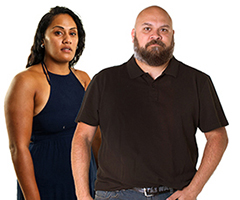 The Close the Gap Campaign Steering Committee for Indigenous Health Equality released their 2017 Progress and Priorities Report last month.
The Close the Gap Campaign Steering Committee for Indigenous Health Equality released their 2017 Progress and Priorities Report last month.
The report delivered the clear message that Australia is failing Aboriginal and Torres Strait Islander peoples, particularly in the area of health, even though Closing the Gap has been a national priority for the last 10 years.
The aim of Closing the Gap is to reduce the disadvantages faced by Aboriginal and Torres Strait Islander peoples focusing on health, education and employment.
The report states that, the federal government “has failed to listen or act adequately or appropriately” on the recommendations of the Close the Gap Steering Committee.
Prime Minister’s annual report
The Committee’s report follows on from the Prime Minister’s annual report to Parliament in February on what progress has been made in the Closing the Gap initiative. In his introduction, the Prime Minister agrees that there hasn’t been sufficient progress on the Closing the Gap targets, confirming that we are only on track to meet one of the seven targets.
The Committee’s 2017 report was particularly concerned with the government’s understanding of the importance of how social and cultural aspects interconnect to affect health.
The report focused on the priority of “meaningful engagement” between government and Australian and Torres Strait Islander peoples and the need for health to be considered in context with the wider social and cultural aspects that impact on health and wellbeing.
The Close the Gap Campaign is a supporter of the Redfern Statement, which makes clear that areas of disadvantage affect each other. That poverty, disability, child removal, incarceration and community violence all impact on health. And health, in turn, affects a person’s ability to learn and work.
Positive progress
The report does note positive progress in some areas of education and employment. Including that the percentage of 20 to 24 year olds completing year 12 or above has increased, from 45 per cent in 2008 to 62 per cent in 2014¬–15. The number of 20 to 64 year olds with, or working towards, post-school qualifications has also increased, from 26 per cent in 2002 to 42 per cent in 2014–15.
The percentage of adults whose main income was from employment also increased from 32 per cent in 2002 to 43 per cent in 2014–15.
Literacy and numeracy not on track
The target to halve the gap in reading and numeracy for Aboriginal and Torres Strait Islander students by 2018, however, is not on track. While improvements have been seen in the percentage of Aboriginal and Torres Strait Islander students at or above the national minimum standards, only one area (Year 9 numeracy) is likely to meet its target.
Aboriginal and Torres Strait Islander 15 year-olds are on average about two and a third years behind non-Indigenous 15 year-olds in literacy and numeracy and the boys are also falling behind the girls.
The gap between Aboriginal and Torres Strait Islander students and non-Indigenous students in reading, writing and numeracy is also much wider in very remote areas than it is in metropolitan areas.
The recommendations raised by the Campaign’s report focus on the government involving Aboriginal and Torres Strait Islander people in the solutions and decision making process and on the importance of recognising how other areas of disadvantage impact on health.
The report states that “the nation is at risk of failing Aboriginal and Torres Strait Islander peoples, if it does not act on the recommendations set out by the Close the Gap Campaign, as a priority over the next 12 months.”
You can read the full Close the Gap Campaign 2017 Progress and Priorities Report on the Australian Human Rights Commission website.
And you can also read the Prime Minister’s report on the Closing the Gap website.


